- Home
- slideshows
- miscellaneous
- Nintendo's biggest game of 2018 proves that the gaming giant still hasn't figured out how to make online games
Nintendo's biggest game of 2018 proves that the gaming giant still hasn't figured out how to make online games
Things start with a lot of promise.

The options are simple, and easy to understand!
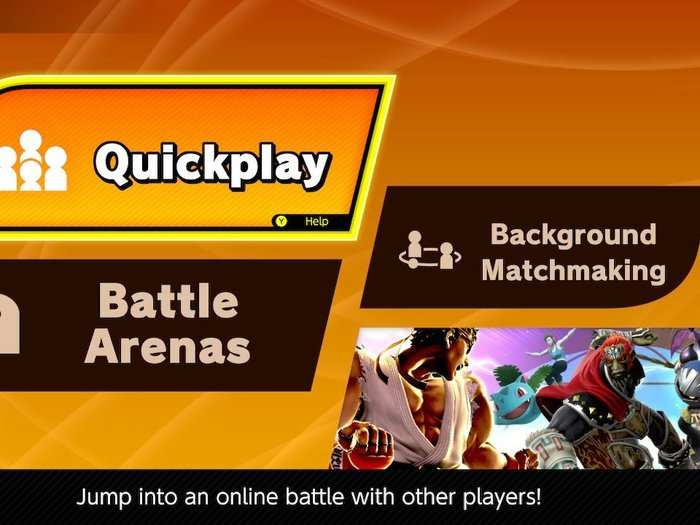
You can jump in with "Quickplay," which defaults to matchmaking you with any multiplayer setting, and one to three opponents. It's the "I just want to play some 'Smash' online" option.
"Battle Arenas" offer more customization, allowing you to search for specific game types and player counts. It's intended for people who have strong feelings about how "Smash" should be played.
But even if you just jump into Quickplay, you're still able to filter by what type of game you'd like to be matched with. Upon first inspection, there's a nice amount of detail to the online section of "Super Smash Bros. Ultimate."
It's the "online" part that's the problem.
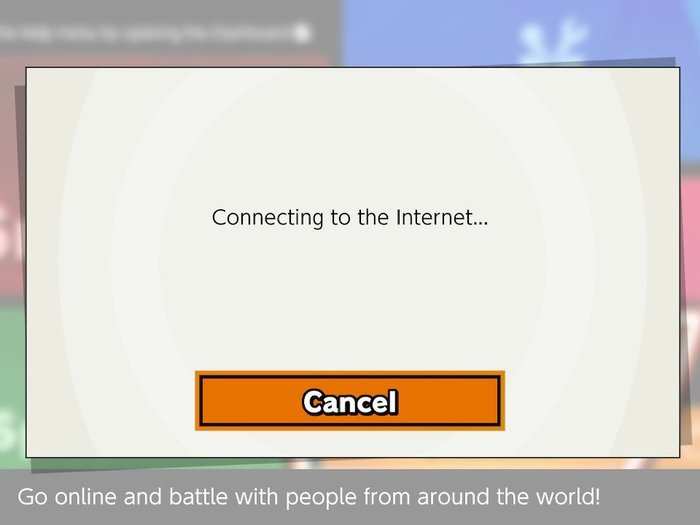
It's impossible to overstate the difference between playing "Super Smash Bros. Ultimate" online and offline — it's like two different games.
Of the dozens of matches I've played online, a shockingly small percentage could be described as "smooth." At some point in every match, and often throughout every match, I've hit crushing lag.
What do I mean by "lag"? Even if you don't know the term, you've no doubt experienced it: A video buffering in YouTube/Netflix/etc.? That's lag.
In the case of "Super Smash Bros. Ultimate," that disconnect is far more detrimental.
Sometimes it's a stutter in gameplay here or there. Sometimes it's a several second stop in the action. It's unpredictable, frustrating, and — worst of all — it makes the game nearly unplayable.
"Super Smash Bros. Ultimate" is a fast, frenetic game. Playing online kills that.
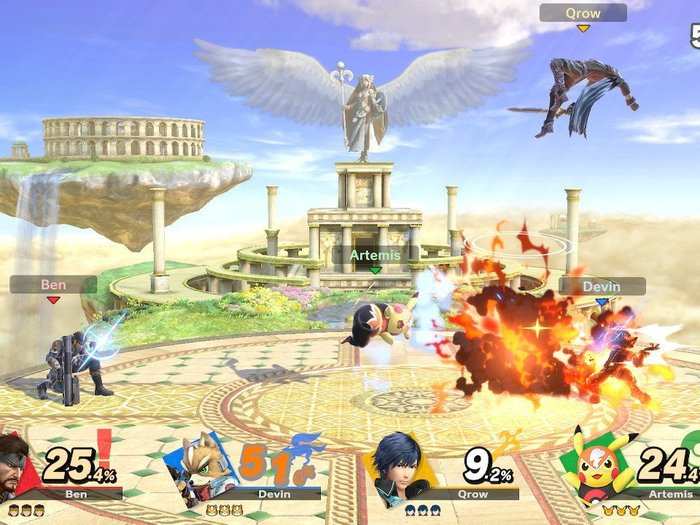
The joy of the "Smash Bros." franchise has always been in its chaotic nature. Crazy stuff happens around you — and often, to you — while you desperately struggle to execute an ever-changing set of plans.
With each successive game in the franchise, that chaos has gotten more chaotic as its speed has increased. Play "Super Smash Bros. Ultimate" at home on the couch against friends, and you'll quickly see just how crazy it can get. Even the most experienced players get easily lost in the melee.
But when you bring that game online, and introduce repetitive, unpredictable lag, the core of the experience vanishes. What's left in its place is something significantly less fun to play.
Four-player matches, like the one seen above, are especially prone to extreme lag as the game struggles to balance four different internet speeds against each other in a blazing fast game.
There's no excuse for this in 2018.
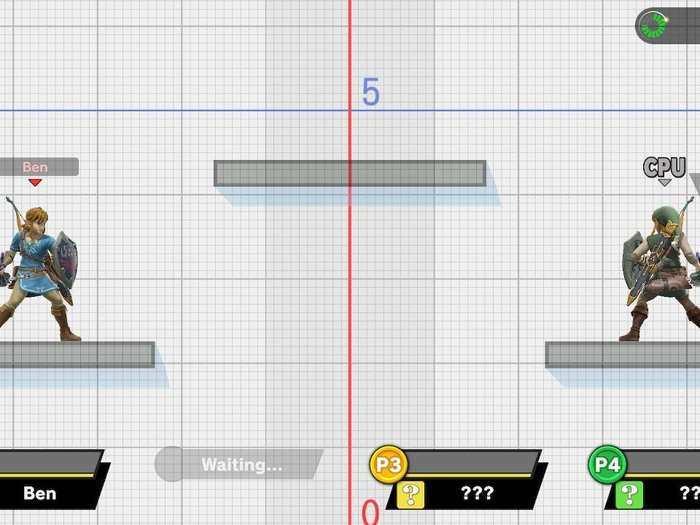
Online gaming has come a long way in the last 20 years. Long gone are the days of online servers melting under the strain of too many players suddenly signing on at launch.
In 2018, players expect online games to work as promised. And when they are broken, they expect the company to communicate coming fixes.
Major games in 2018 don't get a pass on broken online infrastructure.
Which is exactly why there are people being very vocal about it on social media:
When Nintendo didn't charge money to play its games online, these kinds of issues were excusable. Now that there's an annual fee — albeit a very low one at $20/year — flaws stand out more, and more people get justifiably upset.
Nintendo has said nothing publicly about the online issues with "Super Smash Bros. Ultimate," and a representative for Nintendo didn't respond to repeated requests for comment.
Super smash bros ultimate has perhaps the worst online matchmaking/netcode of any AAA game - for its time - ever.
I like the game a lot but that just makes this so much worse.
Smash's netcode is pure TRASH. Even in LOCAL multiplayer matches, it's terrible. This weekend, we tried to play with 4 players on my Switch and a 5th player on his own Switch. We were sitting right next to each other and the lag was as if we were on opposite sides of the planet
— Mike (@StrikerObi) December 11, 2018There are no ways currently known to mitigate the online issues.
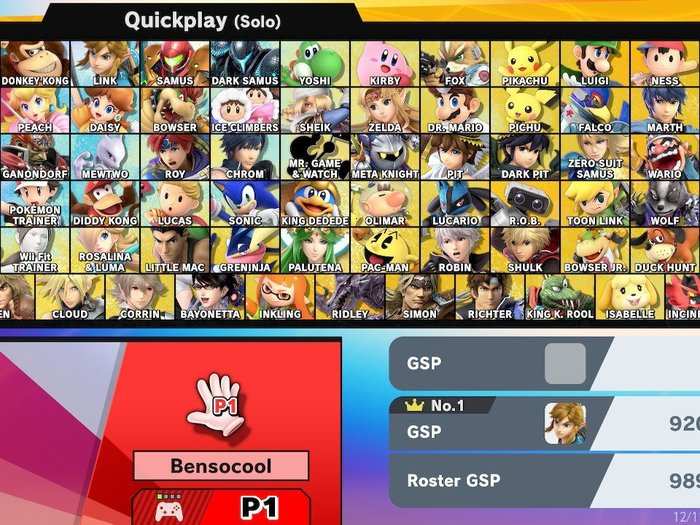
Every time I've played "Super Smash Bros. Ultimate" online, I've done so with the Nintendo Switch docked in my living room. It sits about two feet away from my router, and speed tests on the Switch show that I'm averaging about 25 to 30 Mbps.
Across the room, on a 2018 MacBook Air, I'm averaging 65 to 70 Mbps.
Since Nintendo didn't include an Ethernet port on the Switch, and I don't own the $30 adapter Nintendo sells separately, I have no way of hardwiring the console — something I do with every other console I own as it helps with connection stability. That said, given the nature of the Switch as a hybrid home and portable console, I would argue that it should be able to handle online gaming over WiFi.
Would the adapter help? Maybe, but it wouldn't account for my opponents having poor internet connections, and it wouldn't account for the way that "Super Smash Bros. Ultimate" handles the varying internet speeds of players.
The player with the worst internet connection determines the speed of the game.
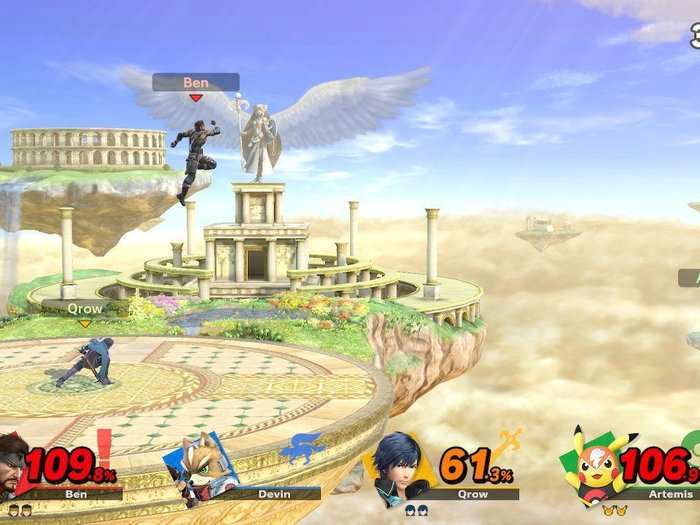
I fell down a rabbit hole on Reddit and YouTube learning how to optimize my Nintendo Switch internet settings. "Maybe it's me!" I thought, before I spent several hours learning far too much about DNS and MTU settings.
It isn't me.
I pay for ~125 Mbps internet speeds, and I get those speeds — or higher — on the Xbox One that's plugged in to the same router that's providing WiFi to my Switch. Even at the significantly reduced internet speed that the Switch is capable of, online gaming should be no problem. At 25 to 30 Mbps, you should be able to easily stream an HD movie while playing games online, and have bandwidth to spare.
The reason I'm running into lag so often, just like so many other players, is because all it takes is one bad connection to slow down the entire match. That's why four-player matches tend to have the worst lag: Your chances of one player having a bad connection increase exponentially with four players rather than two.
Many other fighting games have solved this issue; it's unclear what happened in the case of "Super Smash Bros. Ultimate."
If you do happen to find opponents with good internet speeds, you have to keep using the same character over and over in order to keep playing together.
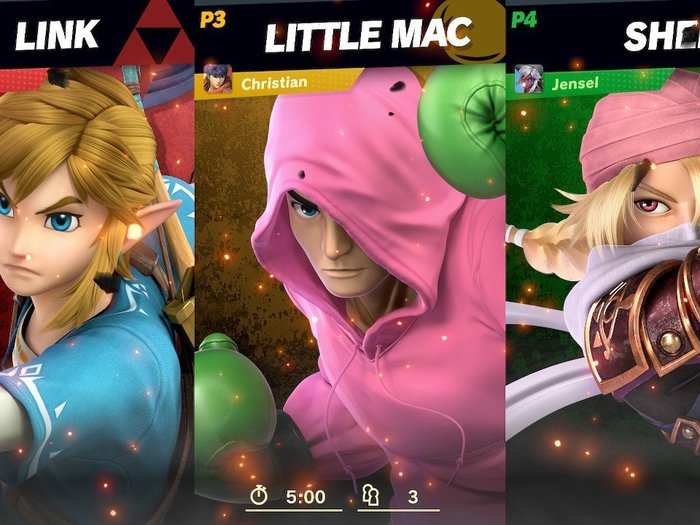
In a bizarre, unfortunate design choice, the "rematch" option after each match forces you to keep playing as the same character. If you do manage to find an opponent with a good internet connection, and you both want to keep playing together, you're stuck playing as the same characters in perpetuity.
Even if your opponent(s) doesn't hit rematch, the game then pushes you into continued matchmaking using the same character as the last round — another bizarre, unfortunate design choice.
These issues are solvable. I'm hopeful that Nintendo will bolster its online infrastructure and update the game with amendments to how matchmaking works. For now, the online component of "Super Smash Bros. Ultimate" is the only blemish on an otherwise outstanding package.
Popular Right Now
Popular Keywords
Advertisement